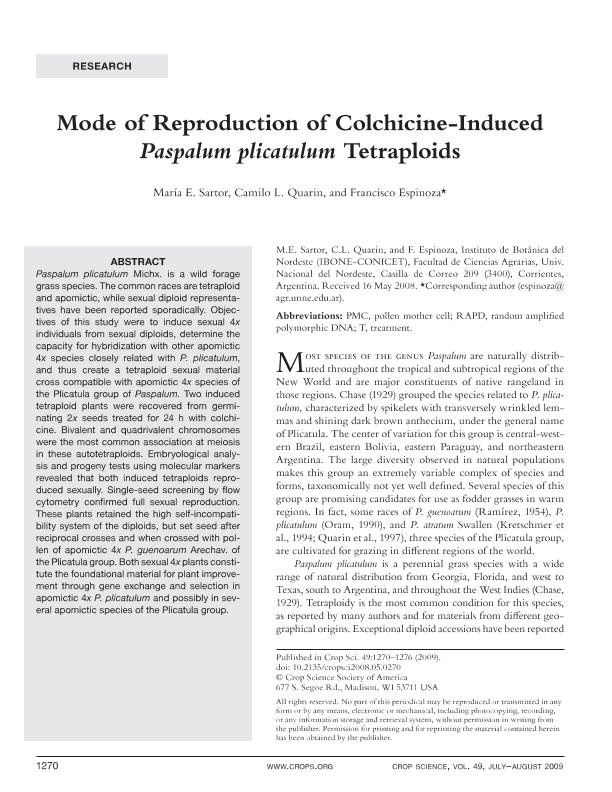Artículo
Mode of Reproduction of Colchicine-Induced Tetraploids
Fecha de publicación:
08/2009
Editorial:
Crop Science Society of America
Revista:
Crop Science
ISSN:
0011-183X
e-ISSN:
1435-0653
Idioma:
Inglés
Tipo de recurso:
Artículo publicado
Clasificación temática:
Resumen
Soybean mosaic virus (SMV) is the causal agent of a commonly occurring disease of soybean [Glycine max (L.) Merr.] that can be effectively controlled through the deployment of single, dominant genes known as Rsv genes, which confer resistance to different strains of SMV. The Rsv1-n allele in PI 507389 conditions a lethal necrosis (LN) reaction on inoculation with specific SMV strains, including SMV-G1, -G5, and -G6. The objective of the current study was to examine effects of the Rsv1-n allele introgressed into the susceptible genotype ‘Essex’ background alone or in combination with either Rsv3 or Rsv4 resistance genes by inoculation with six different SMV strains. Presence of Rsv1-n and its LN as well as severe mosaic reactions to the strains tested were masked when the gene was pyramided with Rsv3 and Rsv4 Thus in some cases, the LN-causing gene may go undetected in breeding populations. Pyramided isolines containing Rsv1-n and Rsv4 together were susceptible to SMV-G6, displaying a mosaic reaction, although Rsv4 alone confers resistance against all known strains. This study demonstrates the importance of selecting against the Rsv1-n allele to prevent its introduction into breeding programs
Palabras clave:
Autoploidy
,
Plant Reproduction
Archivos asociados
Licencia
Identificadores
Colecciones
Articulos(IBONE)
Articulos de INST.DE BOTANICA DEL NORDESTE (I)
Articulos de INST.DE BOTANICA DEL NORDESTE (I)
Citación
Sartor, Maria Esperanza; Quarin, Camilo Luis; Espinoza, Francisco; Mode of Reproduction of Colchicine-Induced Tetraploids; Crop Science Society of America; Crop Science; 49; 4; 8-2009; 1270-1276
Compartir
Altmétricas




